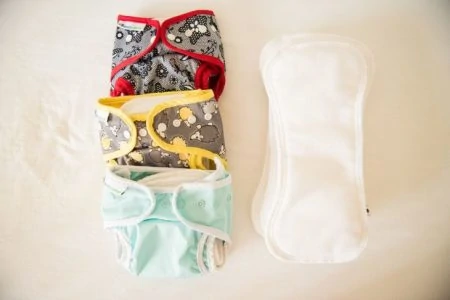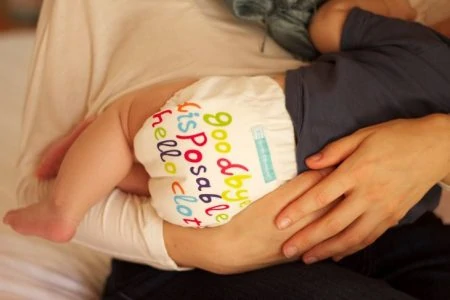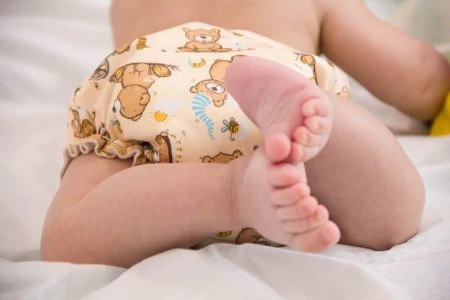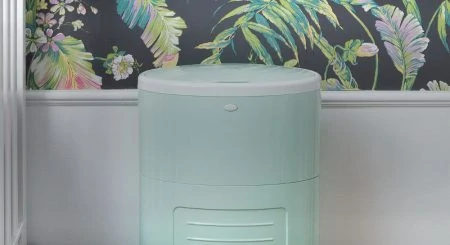The good news? You don’t have to tackle this alone. Cloth diaper banks are designed to bridge the gap, getting reusable diapers into the hands of families who need them most. We have gathered everything you need to know about how these banks work, where to find them, and how to access supplies for free or cheap.
Key Takeaways
- Cloth diaper banks provide free or loaned cloth diapers to low-income families, eliminating the high upfront cost of starting.
- Used cloth diapers are perfectly safe when sanitized properly; you can easily deep clean them at home using bleach and hot water.
- Major organizations like The Cloth Option and Share the Love operate nationally, while local chapters serve specific communities.
- If you cannot find a bank nearby, look for free stashes on “Buy Nothing” groups or purchase second-hand through Facebook Marketplace or Mercari.
What Is a Cloth Diaper Bank?
Think of a cloth diaper bank just like a food bank, but for baby bottoms. These are non-profit organizations that collect new and used cloth diapers to distribute to families in financial need. Depending on the organization, they may provide a permanent supply you get to keep, or a loan program where you return the diapers once your child potty trains or outgrows them.
Addressing “Diaper Need”
Currently, there are very few public service programs that assist families with the cost of diapers. Food stamps (SNAP) and WIC do not cover them. This gap creates a crisis known as “diaper need.”
When funds are tight, parents often have to stretch their limited resources. Sadly, this can mean leaving a baby in a soiled diaper longer than recommended or attempting to reuse disposable products (1). These desperation measures often lead to severe diaper rash, urinary tract infections, and significant stress for the parents.
Why It Matters
The Real Cost: Cloth vs. Disposables
It is estimated that parents spend upwards of $900 to $1,000 per year on disposable diapers for one child (2). By comparison, using cloth diapers creates massive lifetime savings.
However, the “entry fee” is high. Building a full stash of new cloth diapers can cost anywhere from $300 to over $500 upfront. For families living paycheck to paycheck, coming up with that lump sum is impossible, even if it saves money later. Cloth diaper banks step in to cover that initial investment.
Are Used Diapers Safe?
Most diaper banks operate on donations, meaning the diapers you receive will likely be used. This causes some parents to worry about hygiene.
Rest assured that second-hand cloth diapers are safe. With the right wash routine, cloth gets fully sanitized. Most banks sanitize donations before sending them out, but for peace of mind, you can bleach and strip the diapers yourself when they arrive.
Here is a simple routine to sanitize pre-loved diapers:
- Load the washer: Place the diapers in your machine.
- Add cleaning agents: Use ½ cup of bleach and 1 tablespoon of strong dish soap (like Dawn).
- Wash hot: Run the machine on the hottest cycle available.
- Rinse thoroughly: Run 2-3 extra rinse cycles to ensure all bleach and soap residue is gone. The water should be free of suds.
- Dry: Tumble dry inserts (no fabric softener) and hang dry the waterproof covers to preserve the elastic.
- Sun them (Optional): Laying wet diapers in direct sunlight helps kill remaining bacteria and naturally fades stains.
Top Cloth Diaper Banks to Know
If you need assistance, there are several reputable organizations across North America. While local availability varies, these are the primary networks to check:
The Cloth Option
Currently one of the largest networks in the U.S., The Cloth Option advocates for ending diaper need through cloth distribution. They have a wide network of local advocates who distribute diapers to families. If there isn’t a local advocate near you, they may be able to ship diapers directly to your home.
Website: https://theclothoption.org/
Share the Love
Launched by the founder of Cotton Babies, this program has been helping families for over a decade. They facilitate diaper loans through host sites across the United States. Approved applicants generally pick up their supply from a local host, though some mail options may be available for a small shipping fee.
Website: http://www.cottonbabieslove.com/
One Diaper Canada
Based in Ottawa, this organization provides complete cloth diaper kits to Canadian families. Their kits typically include everything you need to start, including covers, inserts, and cloth-safe detergent samples. While they focus on the Ottawa region, they are a great resource for connecting with other Canadian banks.
Website: http://onediaper.org/
Cloth for a Cause
This Canadian non-profit is run by volunteers who collect, repair, and sanitize diapers for families in need. They have chapters across several provinces. Diapers are provided on a loan basis and returned when the family is finished with them.
Website: https://clothforacause.org/
GroVia Gives
GroVia is a well-known diaper brand that occasionally runs a lending program. Availability can fluctuate based on their stock and funding, so it is best to check their website for the current status of the program.
How to Apply for Help
Every bank has its own specific rules, but the application process usually follows a similar pattern. Here is what to expect:
1. Verify Eligibility
Read the criteria carefully. Some banks strictly serve families on government assistance (like WIC or SNAP), while others are open to anyone self-identifying a financial need.
2. Check the Service Area
Many banks are location-specific to save on shipping costs. Ensure you live within the zip codes or region they serve.
3. Prepare Your Documents
You may need to upload digital copies or photos of documents to prove your status.
Common requirements include:
- Proof of child’s age (birth certificate or hospital discharge papers).
- Proof of pregnancy (for expectant moms).
- Proof of address (utility bill or lease).
- Proof of income or government assistance enrollment.
4. Monitor Your Email
Once you submit an online application, keep an eye on your inbox, including your spam folder. Most organizations are run by volunteers, so response times vary, but they will need you to confirm details before sending supplies.
DIY Savings: Building a Stash Without a Bank
If you don’t qualify for a program or there isn’t one nearby, you can still get cloth diapers for free or at a fraction of the retail cost.
1. Buy Nothing Groups
The “Buy Nothing” movement is huge right now. Join your local Buy Nothing group on Facebook or download their app. Post a polite “Ask” explaining that you are looking for cloth diapers. Many veteran parents have a stash sitting in their attic and are thrilled to gift it to a neighbor rather than throw it away.
2. Shop Second-Hand Markets
Private sellers are usually cheaper than retail consignment shops. You can often find huge “lots” of diapers for sale where the cost per diaper drops to just a few dollars.
Check these platforms:
- Facebook Marketplace (Local pickup saves shipping costs).
- Mercari (Great for shipping used bundles).
- Poshmark.
- OfferUp.
3. Retailer “Seconds” Sales
Companies like Cotton Babies or Green Mountain Diapers occasionally hold “seconds” sales. These are new diapers with minor cosmetic flaws (like crooked stitching) sold at a deep discount.
4. Rethink Your Registry
If you are expecting, people will want to buy you gifts. Skip the bottle warmers and fancy newborn outfits that barely get worn. Instead, register specifically for cloth diapers. Most major retailers like Amazon and Target sell them now, making it easy for relatives to purchase them for you.
How to Give Back
If you are on the other side of your journey and have diapers you no longer need, please donate them! Most of the banks listed above accept donations of clean, used diapers. You can also act as a local “fairy godmother” and gift them directly to a struggling parent in your community.
FAQs
The Bottom Line
Financial struggles shouldn’t prevent you from choosing the best diapering option for your baby. While the initial price tag of cloth diapers is intimidating, diaper banks and community resources are there to help you hurdle that barrier.
To get started without breaking the bank:
- Apply to a national network like The Cloth Option.
- Search for local “cloth diaper lending libraries.”
- Check Facebook Marketplace and Mercari for used bundles.
- Ask for gifts in your local Buy Nothing group.
- Put cloth diapers at the top of your baby registry.










